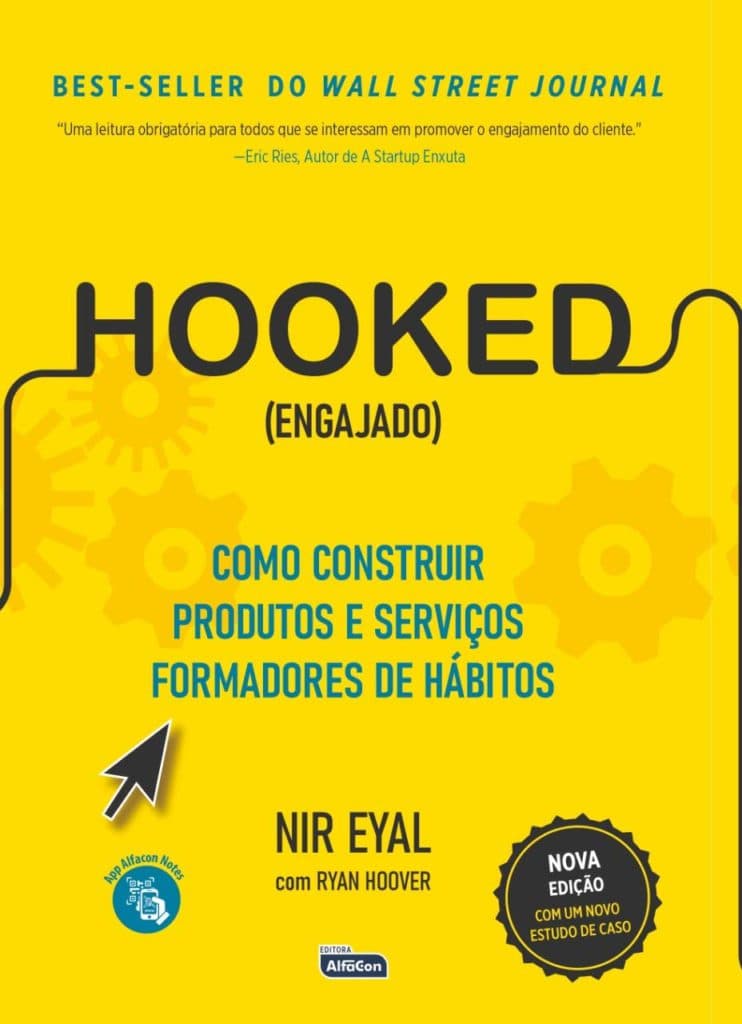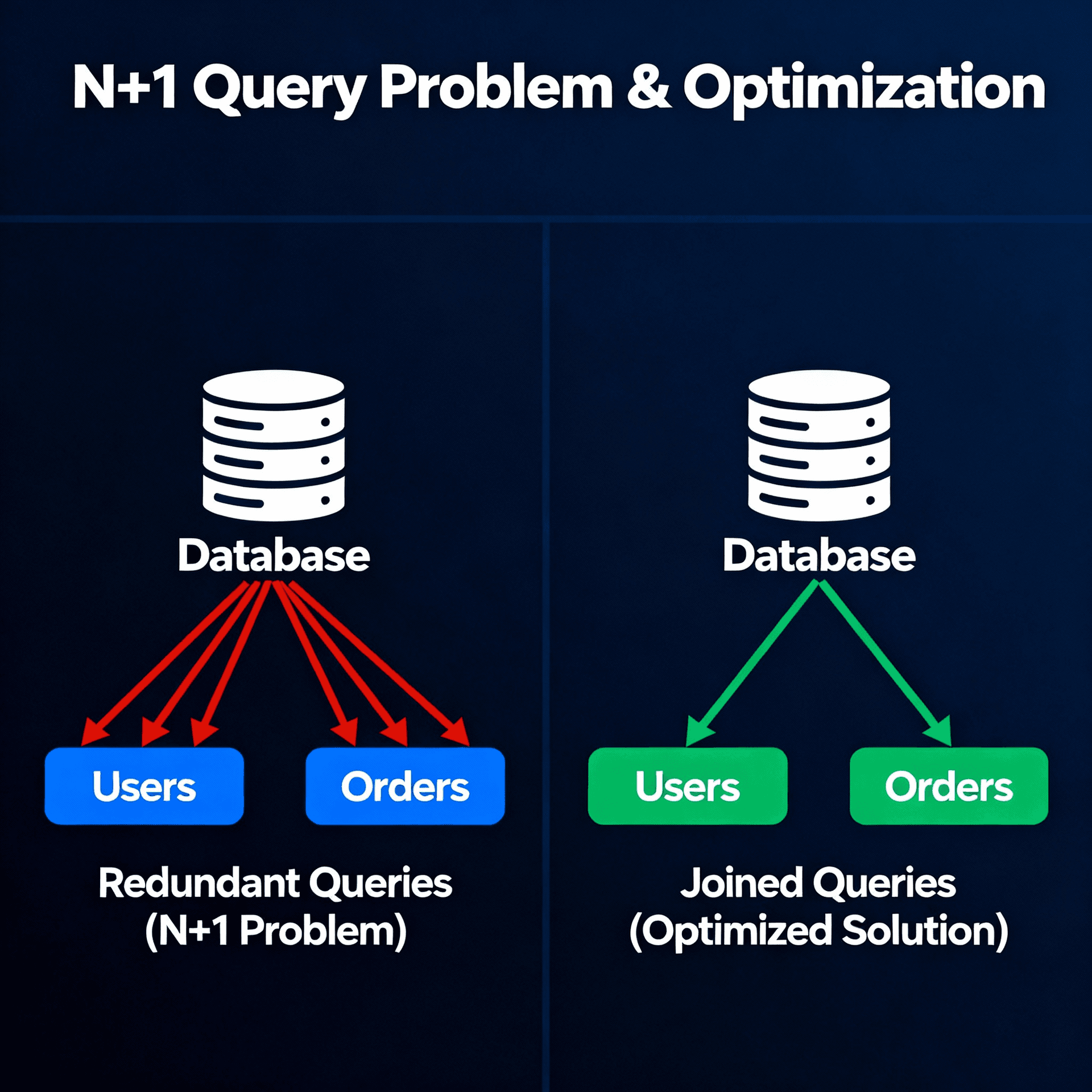Hooked

The author explains the model he created by analyzing several companies that managed to engage their customers:
The Hook Model
 https://uxdesign.cc/using-the-hook-model-for-user-research-cad3d17f81e7
https://uxdesign.cc/using-the-hook-model-for-user-research-cad3d17f81e7
Trigger – It's what drives the action. It's the spark that makes the gear turn. Triggers can be external(Paid triggers,Earned Triggers,Relationship Triggers,Owned triggers) and internal(Feelings, Emotions...).
Ação – It is the behavior that anticipates the reward. When a notification (trigger) appears and you click, for example.
Variable Reward – Reward variation generates even greater engagement. For example, when you post a photo on Instagram, you don't know who will like it or even how many likes it will have.
Investment – When the user needs to invest time, work or money in your platform. For example, this is when you log into LinkedIn and fill out your entire profile. To justify the investment of time, you will certainly want to come back.
INTRO
- Habits are defined as “behaviors done with little or no conscious thought.”
- The convergence of access, data, and speed is making the world a more habit-forming place.
- Businesses that create customer habits gain a significant competitive advantage.
- The Hook Model describes an experience designed to connect the user’s problem to a solution frequently enough to form a habit.
- The Hook Model has four phases: trigger, action, variable reward, and investment
1 - THE HABIT ZONE

- For some businesses, forming habits is a critical component to success, but not every business requires habitual user engagement.
- When successful, forming strong user habits can have several business benefits including: higher customer lifetime value (CLTV), greater pricing flexibility, supercharged growth, and a sharper competitive edge.
- Habits cannot form outside the Habit Zone, where the behavior occurs with enough frequency and perceived utility.
- Habit-forming products often start as nice-to-haves (vitamins) but once the habit is formed, they become must-haves (painkillers).
- Habit-forming products alleviate users’ pain by relieving a pronounced itch.
- Designing habit-forming products is a form of manipulation. Product builders would benefit from a bit of introspection before attempting to hook users to make sure they are building healthy habits, not unhealthy addictions (more to come on this topic in chapter 8).
DO THIS NOW
- What habits does your business model require?
- What problem are users turning to your product to solve?
- How do users currently solve that problem and why does it need a solution
- How frequently do you expect users to engage with your product?
- What user behavior do you want to make into a habit?
2 - TRIGGER
- Triggers cue the user to take action and are the first step in the Hook Model.
- Triggers come in two types—external and internal.
- External triggers tell the user what to do next by placing information within the user’s environment.
- Internal triggers tell the user what to do next through associations stored in the user’s memory.
- Negative emotions frequently serve as internal triggers.
- To build a habit-forming product, makers need to understand which user emotions may be tied to internal triggers and know how to leverage external triggers to drive the user to action.
DO THIS NOW
- Who is your product’s user?
- What is the user doing right before your intended habit?
- Come up with three internal triggers that could cue your user to action. Refer to the 5 Whys Method described in this chapter.
- Which internal trigger does your user experience most frequently?
- Finish this brief narrative using the most frequent internal trigger and the habit you are designing: “Every time the user (internal trigger), he/she (first action of intended habit).”
- Refer back to the question about what the user is doing right before the first action of the habit. What might be places and times to send an external trigger
- How can you couple an external trigger as closely as possible to when the user’s internal trigger fires?
- Think of at least three conventional ways to trigger your user with current technology (e-mails, notifications, text messages, etc.). Then stretch yourself to come up with at least three crazy or currently impossible ideas for ways to trigger your user (wearable computers, biometric sensors, carrier pigeons, etc.). You could find that your crazy ideas spur some new approaches that may not be so nutty after all. In a few years new technologies will create all sorts of currently unimaginable triggering opportunities.
3 - ACTION
- The second step in the Hook is action.
- The action is the simplest behavior in anticipation of reward.
- As described by Dr. B. J. Fogg’s Behavior Model:
- For any behavior to occur, a trigger must be present at the same time as the user has sufficient ability and motivation to take action.
- To increase the desired behavior, ensure a clear trigger is present; next, increase ability by making the action easier to do; finally, align with the right motivator.
- Every behavior is driven by one of three Core Motivators: seeking pleasure and avoiding pain; seeking hope and avoiding fear; seeking social acceptance while avoiding social rejection.
- Ability is influenced by the six factors of time, money, physical effort, brain cycles, social deviance, and non routineness. Ability is dependent on users and their context at that moment.
- Heuristics are cognitive shortcuts we take to make quick decisions. Product designers can utilize many of the hundreds of heuristics to increase the likelihood of their desired action
DO THIS NOW
- Walk through the path your users would take to use your product or service, beginning from the time they feel their internal trigger to the point where they receive their expected outcome.
- How many steps does it take before users obtain the reward they came for?
- How does this process compare with the simplicity of some of the examples described in this chapter?
- How does it compare with competing products and services?
- Which resources are limiting your users’ ability to accomplish the tasks that will become habits?
- Time
- Brain cycles (too confusing)
- Money
- Social deviance (outside the norm)
- Physical effort
- Non-routine (too new)
- Brainstorm three testable ways to make intended tasks easier to complete.
- Consider how you might apply heuristics to make habit-forming actions more likely
4 - VARIABLE REWARD
- Variable reward is the third phase of the Hook Model, and there are three types of variable rewards: the tribe, the hunt, and the self.
- Rewards of the tribe is the search for social rewards fueled by connectedness with other people.
- Rewards of the hunt is the search for material resources and information.
- Rewards of the self is the search for intrinsic rewards of mastery, competence, and completion.
- When our autonomy is threatened, we feel constrained by our lack of choices and often rebel against doing a new behavior. Psychologists refer to this as reactance. Maintaining a sense of user autonomy is a requirement for repeat engagement.
- Experiences with finite variability become increasingly predictable with use and lose their appeal over time. Experiences that maintain user interest by sustaining variability with use exhibit infinite variability.
- Variable rewards must satisfy users’ needs while leaving them wanting to reengage with the product.
__DO THIS NOW __
- Speak with five of your customers in an open-ended interview to identify what they find enjoyable or encouraging about using your product. Are there any moments of delight or surprise? Is there anything they find particularly satisfying about using the product?
- Review the steps your customer takes to use your product or service habitually. What outcome (reward) alleviates the user’s pain? Is the reward fulfilling, yet leaves the user wanting more?
- Brainstorm three ways your product might heighten users’ search for variable rewards using:
- Rewards of the tribe—gratification from others.
- Rewards of the hunt—material goods, money, or information.
- Rewards of the self—mastery, completion, competency, or consistency
5 - INVESTMENT
- The investment phase is the fourth step in the Hook Model.
- Unlike the action phase, which delivers immediate gratification, the investment phase concerns the anticipation of rewards in the future.
- Investments in a product create preferences because of our tendency to overvalue our work, be consistent with past behaviors, and avoid cognitive dissonance.
- Investment comes after the variable reward phase, when users are primed to reciprocate. Investments increase the likelihood of users returning by improving the service the more it is used. They enable the accrual of stored value in the form of content, data, followers, reputation, or skill.
- Investments increase the likelihood of users passing through the Hook again by loading the next trigger to start the cycle all over again.
__DO THIS NOW __
- Review your flow. What “bit of work” are your users doing to increase their likelihood of returning?
- Brainstorm three ways to add small investments into your product to:
- Load the next trigger.
- Store value as data, content, followers, reputation, and skill.
- Identify how long it takes for a “loaded trigger” to reengage your users. How can you reduce the delay to shorten time spent cycling through the Hook?
6 - WHAT ARE YOU GOING TO DO WITH THIS?
- To help you, as a designer of habit-forming technology, assess the morality behind how you manipulate users, it is helpful to determine which of the four categories your work fits into. Are you a facilitator, peddler, entertainer, or dealer?
- Facilitators use their own product and believe it can materially improve people’s lives. They have the highest chance of success because they most closely understand the needs of their users.
- Peddlers believe their product can materially improve people’s lives but do not use it themselves. They must beware of the hubris and inauthenticity that comes from building solutions for people they do not understand firsthand.
- Entertainers use their product but do not believe it can improve people’s lives. They can be successful, but without making the lives of others better in some way, the entertainer’s products often lack staying power.
- Dealers neither use the product nor believe it can improve people’s lives. They have the lowest chance of finding longterm success and often find themselves in morally precarious positions.
DO THIS NOW Take a minute to consider where you fall on the Manipulation Matrix. Do you use your own product or service? Does it influence positive or negative behaviors? How does it make you feel? Ask yourself if you are proud of the way you are influencing the behavior of others.
7 - CASE STUDY: THE BIBLE APP
- The Bible App was far less engaging as a desktop Web site; the mobile interface increased accessibility and usage by providing frequent triggers.
- The Bible App increases users’ ability to take action by frontloading interesting content and providing an alternative audio version.
- By separating the verses into small chunks, users find the Bible easier to read on a daily basis; not knowing what the next verse will be adds a variable reward.
- Every annotation, bookmark, and highlight stores data (and value) in the app, further committing users.
8 - HABIT TESTING AND WHERE TO LOOK FOR HABIT FORMING OPPORTUNITIES
- The Hook Model helps the product designer generate an initial prototype for a habit-forming technology. It also helps uncover potential weaknesses in an existing product’s habitforming potential.
- Once a product is built, Habit Testing helps uncover product devotees, discover which product elements (if any) are habit forming, and why those aspects of your product change user behavior. Habit Testing includes three steps: identify, codify, and modify.
- First, dig into the data to identify how people are using the product.
- Next, codify these findings in search of habitual users. To generate new hypotheses, study the actions and paths taken by devoted users.
- Finally, modify the product to influence more users to follow the same path as your habitual users, and then evaluate results and continue to modify as needed
- Keen observation of one’s own behavior can lead to new insights and habit-forming product opportunities.
- Identifying areas where a new technology makes cycling through the Hook Model faster, more frequent, or more rewarding provides fertile ground for developing new habitforming products.
- Nascent behaviors—new behaviors that few people see or do, yet ultimately fulfill a mass-market need—can inform future breakthrough habit-forming opportunities.
- New interfaces lead to transformative behavior change and business opportunities.
DO THIS NOW
- Perform Habit Testing, as described in this chapter, to identify the steps users take toward long-term engagement.
- Be aware of your behaviors and emotions for the next week as you use everyday products. Ask yourself:
- What triggered me to use these products? Was I prompted externally or through internal means?
- Am I using these products as intended?
- How might these products improve their on-boarding funnels, reengage users through additional external triggers, or encourage users to invest in their services?
- Speak with three people outside your social circle to discover which apps occupy the first screen on their mobile devices. Ask them to use these apps as they normally would and see if you uncover any unnecessary or nascent behaviors.
- Brainstorm five new interfaces that could introduce opportunities or threats to your business


